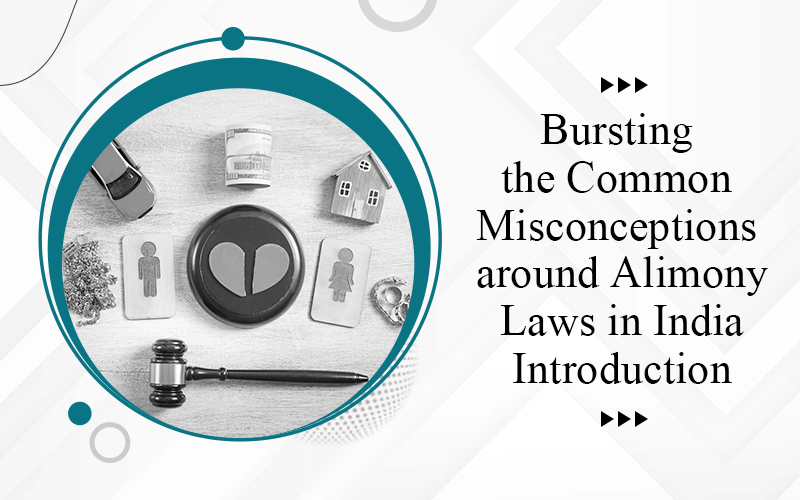Section 452 IPC
The Indian Penal Code (IPC), enacted in 1860, is a comprehensive code intended to cover all substantive aspects of criminal law in India. Among its many sections, Section 452 is particularly significant as it deals with the offense of house-trespass after preparation for hurt, assault, or wrongful restraint. This section is crucial for understanding the nuances of criminal trespass and the added gravity when such trespass is accompanied by intent to cause harm. This article delves into the legal interpretation, essential elements, and judicial pronouncements related to Section 452 IPC.
Legal Provision of section 452 IPC
Section 452 of the IPC states:
“Whoever commits house-trespass, having made preparation for causing hurt to any person, or for assaulting any person, or for wrongfully restraining any person, or for putting any person in fear of hurt, or of assault, or of wrongful restraint, shall be punished with imprisonment of either description for a term which may extend to seven years, and shall also be liable to fine.”
Essential Elements of Section 452 IPC
- House-trespass: The accused must commit house-trespass. House-trespass is defined under Section 442 IPC, which refers to criminal trespass into any building, tent, or vessel used as a human dwelling or any building used as a place for worship or as a place for the custody of property.
- Preparation for causing hurt, assault, or wrongful restraint: The trespasser must have made preparations to cause hurt, assault, or wrongful restraint to any person. Hurt is defined under Section 319 IPC as causing bodily pain, disease, or infirmity to any person. Assault is defined under Section 351 IPC as making any gesture or preparation intending or knowing it to be likely that such gesture or preparation will cause any person present to apprehend that he who makes that gesture or preparation is about to use criminal force to that person. Wrongful restraint is defined under Section 339 IPC as voluntarily obstructing any person so as to prevent that person from proceeding in any direction in which that person has a right to proceed.
- Intent to cause fear: Alternatively, the trespasser must have made preparations with the intent to put any person in fear of hurt, assault, or wrongful restraint.
Interpretation of ‘Preparation
The term ‘preparation’ in Section 452 IPC is pivotal. It signifies actions that demonstrate a readiness to cause hurt, assault, or wrongful restraint. The degree and nature of preparation can vary, but it must be substantial enough to indicate a clear intention to carry out the harmful act. For instance, if a person enters a house armed with a weapon, it is a strong indication of preparation for assault. Similarly, if the trespasser has tools or objects that can be used to cause injury or restrain someone, it signifies preparation. The prosecution must provide concrete evidence to establish that the accused was prepared to carry out the specified acts.
Punishment and Sentencing
Section 452 IPC prescribes a punishment of imprisonment of either description for a term that may extend to seven years and also includes a fine. The severity of the punishment reflects the gravity of the offense, considering that house-trespass with preparation for causing harm is a serious crime.
Sentencing Guidelines
- Nature of the offense: The specific acts of preparation and the circumstances of the trespass are crucial. For instance, entering with a deadly weapon would attract a more severe sentence compared to a less threatening preparatory act.
- Intent and motive: The intention behind the trespass, whether it was to cause bodily harm or simply to instill fear, is a significant factor in determining the sentence.
- Prior criminal record: The accused’s past criminal behavior is also considered. A repeat offender might receive a harsher sentence compared to a first-time offender.
- Impact on the victim: The psychological and physical impact on the victim plays a role in sentencing. If the trespass resulted in significant fear or harm, it could lead to a more stringent punishment.
Defense against Charges under Section 452 IPC
- Lack of preparation: The defense can argue that there was no preparatory act for causing hurt, assault, or wrongful restraint. Mere presence in the house without any weapon or tool may not suffice to prove preparation.
- Lawful excuse: If the accused had a lawful reason to enter the premises, such as being invited or having a right to be there, it could negate the charge of house-trespass.
- Absence of intent: The defense can argue that there was no intention to cause harm or instill fear. If the entry was accidental or without malicious intent, it could lead to acquittal.
Conclusion
Section 452 IPC addresses a grave offense where house-trespass is coupled with preparation for causing harm, reflecting the seriousness of such acts. The legal provisions, judicial interpretations, and essential elements highlight the comprehensive approach of the law to deter such offenses. Understanding the nuances of Section 452 is crucial for legal professionals, as it involves interpreting preparatory acts, intent, and the impact on victims. The judiciary’s role in interpreting and applying this section ensures that justice is served while considering the specific circumstances of each case. The provision serves as a deterrent, emphasizing the importance of safeguarding individuals’ right to safety and security within their homes. For the legal community, Section 452 IPC is a critical area of study and practice, requiring a deep understanding of criminal trespass, preparation, and intent.





One Response
प्रार्थना पत्र अन्तर्गत धारा-175 (3) बी.एन.एस.एस.
महोदय,
निवेदन है कि आगरा गेट चौकी प्रभारी व तीन कांस्टेबल द्वारा प्रार्थी के साथ उत्पीड़न करने के सम्बन्ध में दिनांक 19.06.2024 को बजरिए डाक व स्वयं महोदय के समक्ष उपस्थित होकर प्रार्थना पत्र दिया था। परन्तु आज तक कोई कार्यवाही नहीं हुई। बल्कि उल्टा योगेश कुमार यादव ने मनोज यादव पुत्र अभय सिंह यादव निवासी मोहल्ला मुहम्मदमाह म.नं.-666, शिकोहाबाद, जिला फीरोजाबाद के साथ मिलकर एक वर्ष 1996 के एक पक्षीय आदेश के माध्यम से सी.ओ. सिटी मैनपुरी को भ्रमित कर निर्माण कार्य रुकवाने का आदेश पारित करा लिया और उसी आदेश पर निर्माण कार्य रुकवा दिया। प्रार्थी ने चौकी प्रभारी आगरा गेट से काफी कहा कि आदेश 1996 में प्रार्थी व उसका परिवार पक्षकार नहीं है, यह आदेश हम पर लागू नहीं होता है। प्रार्थी की माँ अन्नपूर्णा पत्नी प्रकाश चन्द्र के नाम पर मकान का बैनामा है। प्रार्थी का परिवार करीबन 24 वर्ष से मकान बनाकर रह रहा है। वर्ष 2015 में जमीन के मालिक से मकान का बैनामा कराया था। दिनांक 01.07.2024 को समय करीब 09:41 बजे सुबह चौकी प्रभारी आगरा गेट योगेश कुमार यादव पुलिस बल के साथ बिना किसी सर्च वारन्ट के मेरे घर में घुस गये। प्रार्थी अपने बैड पर लेटा हुआ था, बैड से खींचकर मारपीट करने लगे, मेरे विरोध करने पर मुझे जबरिया घर से खींचकर जीप में बैठा लिया और जैसा कि उन्होंने पहले जेल भिजवाने की धमकी दी थी, उसी धमकी को पूरा करते हुए मुझ प्रार्थी एवं मेरे यहाँ काम करने आयी लेबर को शान्ति भंग के आरोप में जेल भिजवा दिया। दिनांक 03.07.2024 को जब मैं जमानत पर बाहर आया तो मुझ प्रार्थी को पता चला कि मेरे जेल जाने के बाद योगेश कुमार यादव चौकी प्रभारी आगरा गेट, दिनांक 01.07.2024 को पुलिस बल साथ लेकर समय करीब 3:40 बजे दोपहर विपक्षीगण मनोज यादव पुत्र अभय सिंह यादव, शैलेन्द्र कुमार उर्फ चुन्ना पुत्र नामालूम निवासीगण ग्राम झण्डाहार नौनेर जिला मैनपुरी व सतीश चन्द्र पुत्र दफेदार सिंह निवासी नामालूम व नन्द किशोर पुत्र रामबरन निवासी नगला रते आगरा रोड मैनपुरी के मिलकर असलहों के साथ लैस होकर, मेरे मकान पर ताला डालकर, कब्जा करने की कोशिश की, पुलिस कांस्टेबल बिना किसी सर्च वारन्ट के दीवार कूदकर मेरे घर में घुसे, मेरी पत्नी दीपमाला पत्नी माधुवेन्द्र सिंह, माँ अन्नपूर्णा पत्नी प्रकाश चन्द्र, अम्बिका पुत्री माधुवेन्द्र सिंह, आदित्य कुमार पुत्र माधुवेन्द्र सिंह के साथ मारपीट की। दिनांक 01.07.2024 की रात्रि समय करीब 09:43 बजे उपरोक्त लोग मय असलाह के लैस होकर आये, मेरे परिवार के साथ गाली गलौज करते हुए मकान पर कब्जा की कोशिश करते रहे। मनोज यादव द्वारा वर्ष 2016 से मिथ्या द्वेषपूर्ण तंग करने वाली कार्यवाही करता आ रहा है। प्रार्थी व उसके परिवार को घर, गांव निवास स्थान छोड़ने पर मजबूर किया जा रहा है। प्रार्थी अनुसूचित कोरी जाति का व्यक्ति है। उपरोक्त सभी लोग सामान्य जाति के व्यक्ति हैं। प्रार्थी का परिवार योगेश कुमार यादव चौकी प्रभारी आगरा गेट व उपरोक्त सभी गुण्डों से भयभीत है। जब रक्षक ही भक्षक का कार्य करेंगे तो प्रार्थी अपनी फरियाद कहाँ लेकर जायेगा। उपरोक्त सभी घटनाओं की इलैक्ट्रॉनिक साक्ष्य सी.सी.टी.वी. फुटेज प्रार्थी के पास मौजूद है। इस सम्बन्ध में प्रार्थी ने एक प्रार्थना पत्र जरिए रजिस्टर्ड डाक दिनांक 19.06.2024 को भी श्रीमान पुलिस अधीक्षक महोदय मैनपुरी के समक्ष प्रस्तुत किया था तदोपरान्त दोबारा उपरोक्त लोगों द्वारा प्रार्थी को उत्पीड़ित किये जाने पर दिनांक 01-08-2024 को व उससे पहले दिनांक 05.07.2024 को उक्त घटना का शिकायती प्रार्थना पत्र श्रीमान पुलिस अधीक्षक महोदय मैनपुरी को दस्ती दिया जा चुका है। परन्तु आज तक कोई भी प्रभावी कार्यवाही नहीं की गई है।
इस मामले मे कोर्ट ने एफ आई आर दर्ज करने का आदेश न देकर परिवाद के रूप मे स्वीकार कर व्यान दर्ज करने का आदेश दिया है क्या इस मामले मे कोर्ट द्वारा एफ आई आर दर्ज करने का आदेश दिया जाना चाहिए था